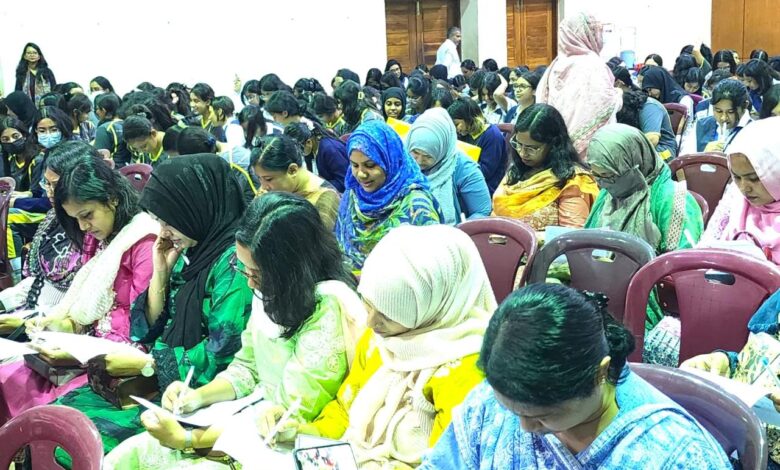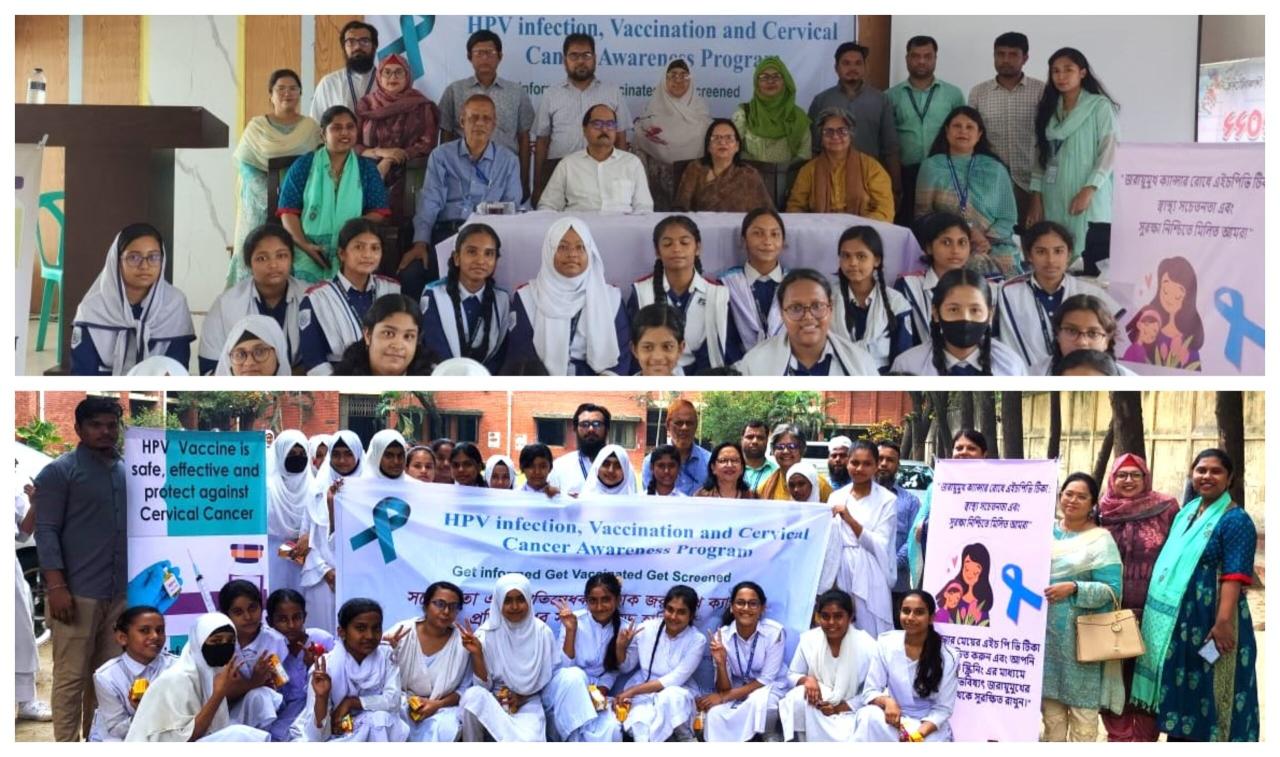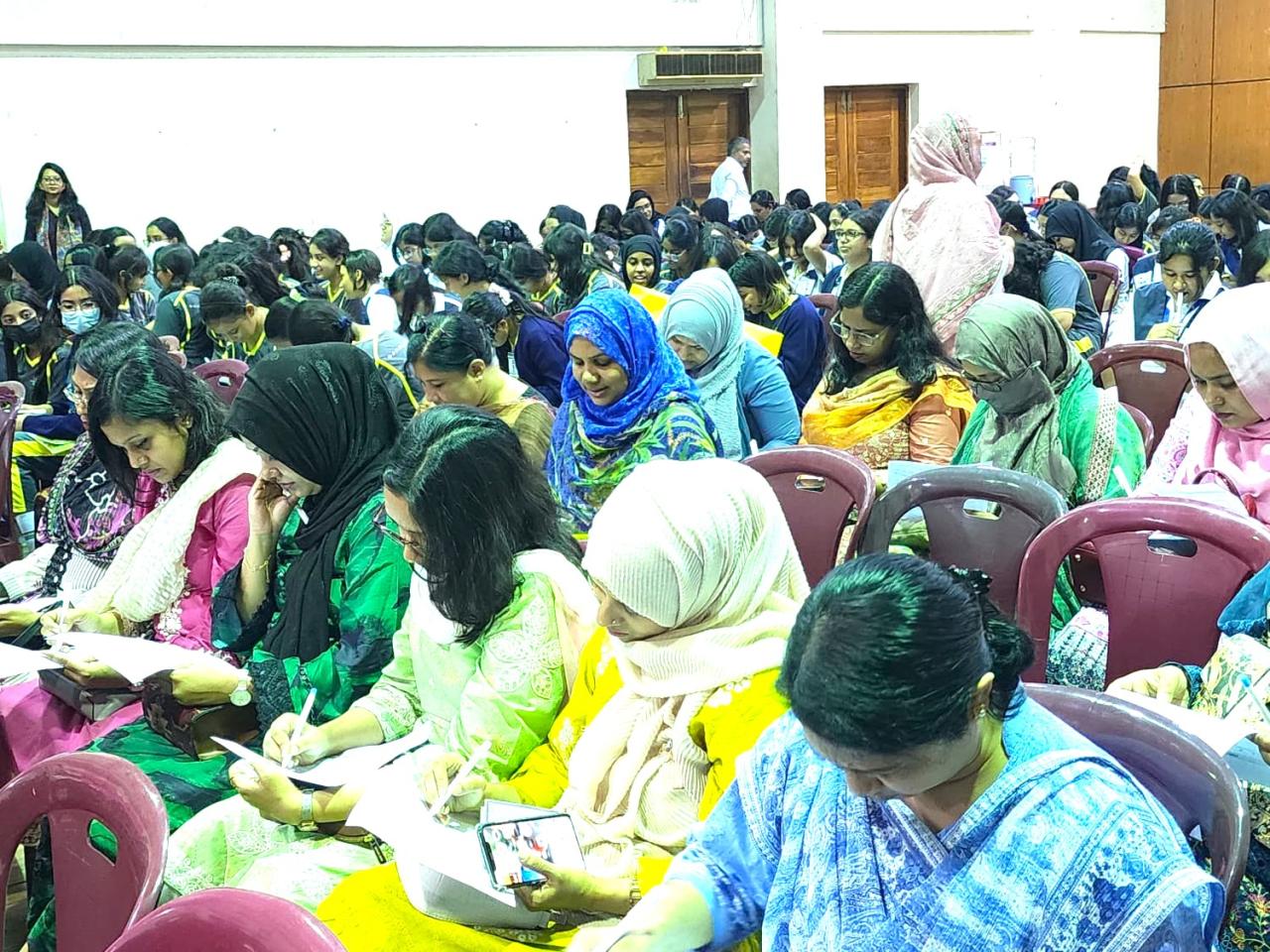
Bengaluru Launches Free HPV Vaccine Drive
Bengaluru launches free HPV vaccination drive for girls to prevent cervical cancer – that headline alone speaks volumes! This incredible initiative is aiming to drastically reduce the incidence of cervical cancer in the city, a disease that affects thousands of women globally. It’s a huge step forward in public health, offering a powerful preventative measure to a generation of young women.
But how will it work? What are the challenges? And what does this mean for the future of women’s health in Bengaluru? Let’s dive in!
The program focuses on vaccinating girls before they become sexually active, maximizing the vaccine’s effectiveness. Outreach strategies are crucial, and Bengaluru is employing a multi-pronged approach, including school programs, community events, and targeted social media campaigns. The goal is to ensure accessibility for all, even reaching those in underserved communities. This requires overcoming logistical hurdles, ensuring adequate vaccine supply and trained personnel, and addressing potential hesitancy within communities.
The long-term benefits are immense – not only a reduction in cervical cancer cases but also significant cost savings for the healthcare system and an improvement in the overall quality of life for countless women.
Bengaluru’s HPV Vaccination Drive
Bengaluru’s launch of a free HPV vaccination drive for girls represents a significant step forward in public health, aiming to drastically reduce the incidence of cervical cancer, a leading cause of cancer-related deaths among women globally. This initiative holds the potential to reshape the landscape of women’s health in the city, offering a preventative measure against a devastating disease.
Public Health Impact of the HPV Vaccination Drive
The impact of this free HPV vaccination drive on cervical cancer rates in Bengaluru is projected to be substantial. While precise figures require long-term monitoring, we can extrapolate from the success of similar programs in other countries. Studies have consistently demonstrated that widespread HPV vaccination significantly reduces cervical cancer incidence. For example, Australia, which implemented a nationwide HPV vaccination program, has seen a dramatic decline in the number of HPV infections among young women, leading to projections of a substantial reduction in cervical cancer cases in the coming decades.
We can reasonably expect a similar trend in Bengaluru, although the exact figures will depend on vaccination coverage and the specific characteristics of the population.
Comparison of Cervical Cancer Incidence Rates
Prior to the implementation of the free vaccination program, Bengaluru’s cervical cancer incidence rate likely mirrored national averages, which unfortunately remain relatively high. Accurate pre-program data collection will be crucial for future comparative analysis. However, based on global trends and successful vaccination programs elsewhere, we can project a significant decrease in incidence rates over the next 10-20 years.
For instance, if the vaccination coverage reaches 80%, a reduction of 70-80% in cervical cancer cases could be observed within 10-15 years. This would bring Bengaluru’s rates closer to those seen in countries with highly successful vaccination programs.
Long-Term Public Health Benefits
The long-term benefits extend beyond simply reducing cancer cases. A successful vaccination program translates into reduced healthcare costs associated with cervical cancer diagnosis, treatment, and palliative care. This frees up resources for other crucial health initiatives. Equally important is the improved quality of life for women and their families. Preventing cervical cancer means preventing premature death, prolonged suffering, and the financial strain associated with lengthy and expensive treatments.
The emotional and psychological toll on individuals and families is also significantly reduced.
Hypothetical Infographic: Projected Reduction in Cervical Cancer Cases
Imagine an infographic with two bar graphs side-by-side. The first, labeled “Projected Cervical Cancer Cases without Vaccination,” shows a steadily increasing number of cases over the next 10 years, mirroring the current trend. The second bar graph, labeled “Projected Cervical Cancer Cases with Vaccination (80% Coverage),” shows a sharp decline in cases over the same period. The difference between the two bars would visually represent the projected impact of the vaccination drive.
The infographic would also include a smaller chart illustrating vaccination coverage rates over the 10 years, showing a gradual increase towards the target of 80%. Numerical data would be clearly displayed on both graphs, emphasizing the significant reduction in cancer cases due to the vaccination program. For example, if the projected cases without vaccination are 1000 per year by year 10, the graph with vaccination might show only 200 cases per year by year 10, illustrating an 80% reduction.
Target Audience and Outreach Strategies: Bengaluru Launches Free Hpv Vaccination Drive For Girls To Prevent Cervical Cancer
Bengaluru’s free HPV vaccination drive is a crucial step towards preventing cervical cancer, a significant health concern globally and in India. Effective implementation hinges on reaching the target population with clear, accessible information and removing barriers to vaccination. This requires a multi-pronged approach encompassing targeted outreach and addressing potential challenges.The primary target demographic for this vaccination drive is adolescent girls aged 9-14 years.
This age range is crucial because the HPV vaccine is most effective when administered before sexual activity begins, offering the best protection against HPV infection. Furthermore, vaccinating girls in this age group offers herd immunity benefits, protecting those who may not be vaccinated or for whom the vaccine is less effective. This strategy aligns with global best practices in HPV vaccination programs.
Target Audience Demographics and Rationale
The focus on adolescent girls aged 9-14 years is based on scientific evidence demonstrating the vaccine’s efficacy and the critical window for administering it. The rationale is multifaceted: pre-exposure vaccination offers superior protection; targeting this age group allows for integration into existing school health programs; and it aligns with national and international vaccination schedules. While there may be exceptions for older girls and women who haven’t been vaccinated, focusing on this core age group maximizes impact and resource allocation.
Reaching this group effectively requires strategies that consider their developmental stage, social circles, and access to information.
Bengaluru’s free HPV vaccination drive for girls is fantastic news – proactive healthcare is so important! It got me thinking about other preventative measures, and how crucial early intervention is, like with conditions such as Tourette Syndrome. For helpful resources on managing this condition in children, check out this article on strategies to manage Tourette syndrome in children.
Back to Bengaluru’s initiative, it’s a powerful step towards a healthier future for young women.
Successful Outreach Strategies for HPV Vaccination
Successful HPV vaccination campaigns in other regions have employed a variety of strategies. For example, school-based programs have proven highly effective, integrating vaccination into existing health services. These programs often involve informative sessions for both girls and their parents, addressing common misconceptions and concerns. Another successful strategy is community-based outreach, using trusted community leaders and healthcare workers to disseminate information and encourage vaccination.
These initiatives frequently leverage existing community networks, such as religious organizations or women’s groups, to build trust and reach a wider audience. Successful campaigns also emphasize the importance of parental consent and education, recognizing that parents play a crucial role in decision-making. In some cases, targeted media campaigns, particularly on social media platforms frequented by the target demographic, have significantly increased awareness and uptake.
Challenges in Reaching Underserved Communities and Proposed Solutions
Reaching underserved communities presents unique challenges. These may include limited access to healthcare facilities, low health literacy, cultural barriers, and socioeconomic factors affecting access to information and resources. To overcome these barriers, several strategies are crucial. Mobile vaccination clinics can bring services directly to underserved areas. Community health workers, trusted members of the community, can act as intermediaries, providing information and addressing concerns in local languages.
Addressing misconceptions and misinformation through culturally appropriate communication materials is essential. Incentivizing participation through small benefits or reducing financial barriers, where feasible, can also improve uptake. Collaboration with community leaders and organizations is vital to build trust and ensure the program’s cultural sensitivity.
Comparison of Outreach Methods
| Method | Target Audience | Cost | Estimated Reach |
|---|---|---|---|
| School-based programs | Adolescent girls aged 9-14 | Moderate (depends on school size and resources) | High (potentially reaches most girls within participating schools) |
| Community events (health fairs, etc.) | Parents, girls, and community members | Moderate to High (depending on event scale and location) | Moderate (reach limited by event attendance) |
| Social media campaigns | Adolescent girls and parents | Low to Moderate (depending on campaign complexity) | High (potential for wide reach, but requires careful targeting) |
| Mobile vaccination clinics | Underserved communities | High (requires logistical planning and transportation) | Moderate to High (reach depends on accessibility and community engagement) |
Vaccine Efficacy and Safety
The free HPV vaccination drive in Bengaluru is a significant step towards preventing cervical cancer, a disease that disproportionately affects women. Understanding the efficacy and safety of the HPV vaccine is crucial for both individual decision-making and the success of the public health initiative. This section will delve into the science behind the vaccine, addressing common concerns and misconceptions.The HPV vaccine is highly effective in preventing infections caused by the specific HPV types it targets.
Studies have shown a significant reduction in precancerous lesions and cervical cancer cases among vaccinated individuals. The level of protection varies depending on the vaccine type and the HPV types covered, but overall, the vaccine offers substantial protection against the most oncogenic (cancer-causing) HPV types. This protection translates to a significant reduction in the incidence of cervical cancer and other HPV-related diseases, such as genital warts and anal cancer.
HPV Vaccine Efficacy
The efficacy of the HPV vaccine is demonstrated through large-scale clinical trials and post-market surveillance. These studies consistently show a high rate of protection against persistent infection with the targeted HPV types. For example, studies have shown that the bivalent vaccine (targeting HPV types 16 and 18) is highly effective in preventing infections caused by these two types, which are responsible for the majority of cervical cancers.
Similarly, the quadrivalent and nine-valent vaccines offer broader protection against a wider range of HPV types, further reducing the risk of various HPV-related diseases. The effectiveness is measured by comparing the incidence of HPV infection and related diseases in vaccinated individuals versus unvaccinated individuals in controlled studies. The results consistently show a significant reduction in risk among those who received the vaccine.
HPV Vaccine Safety Profile
The HPV vaccine has an excellent safety profile. Extensive research and monitoring have established its safety and tolerability. Like any vaccine, side effects can occur, but they are generally mild and temporary. Common side effects include pain, redness, or swelling at the injection site, and sometimes mild fever or headache. These typically resolve within a few days.
Serious side effects are extremely rare. Concerns about the vaccine’s link to autoimmune diseases or other serious health problems have been thoroughly investigated and have not been supported by scientific evidence. The benefits of preventing cervical cancer and other HPV-related diseases significantly outweigh the extremely low risk of potential side effects.
HPV Vaccine Types and Effectiveness
Several types of HPV vaccines are available, each targeting a different number of HPV strains. The bivalent vaccine targets HPV types 16 and 18, which are responsible for about 70% of cervical cancers. The quadrivalent vaccine targets HPV types 6, 11, 16, and 18, also providing protection against genital warts. The nine-valent vaccine offers the broadest protection, targeting HPV types 6, 11, 16, 18, 31, 33, 45, 52, and 58, which account for approximately 90% of cervical cancers and a significant proportion of other HPV-related diseases.
The choice of vaccine may depend on factors such as availability and local guidelines.
Key Benefits and Potential Side Effects of the HPV Vaccine
Before considering vaccination, it’s important to weigh the benefits and potential side effects.
- Benefits: Highly effective in preventing HPV infections that cause cervical cancer, other cancers, and genital warts; contributes to significantly reducing the global burden of cervical cancer; long-term protection against targeted HPV types; safe and well-tolerated.
- Potential Side Effects: Pain, redness, or swelling at the injection site; mild fever; headache; fainting (rare); other very rare side effects.
Program Logistics and Implementation
Successfully implementing Bengaluru’s free HPV vaccination drive requires meticulous planning and execution across various logistical stages. From securing the vaccines to ensuring proper administration and follow-up, a robust system is crucial for maximizing the program’s impact and safeguarding the health of the girls participating. This involves careful consideration of vaccine procurement, storage, administration procedures, and the roles of healthcare professionals.
Vaccine Procurement, Storage, and Handling
The initial phase involves procuring sufficient quantities of the HPV vaccine, ensuring its quality and efficacy. This requires establishing contracts with reliable suppliers and adhering to stringent quality control measures. The vaccines must be stored under specific temperature conditions to maintain their potency. Refrigeration units with temperature monitoring systems are essential, and regular temperature checks are crucial to prevent vaccine spoilage.
Trained personnel are needed to handle and transport the vaccines, following established guidelines to maintain the cold chain throughout the process. Any deviation from recommended storage temperatures can compromise the vaccine’s effectiveness. For example, improper storage leading to temperature fluctuations could render a batch of vaccines unusable, necessitating replacement and potentially delaying the vaccination schedule.
HPV Vaccine Administration Procedure
Administering the HPV vaccine involves a standardized procedure to ensure safety and efficacy. The procedure typically begins with verifying the recipient’s identity and reviewing their medical history to identify any contraindications. The vaccine is then administered intramuscularly, usually in the deltoid muscle of the upper arm. Healthcare professionals must adhere to strict aseptic techniques to prevent infections.
Post-vaccination, the recipient is monitored for any immediate adverse reactions. Detailed records of each vaccination, including the vaccine batch number, administration date, and any observed reactions, are meticulously documented. For example, a detailed record-keeping system could involve a digital database linked to individual identification numbers, ensuring easy tracking and reporting of vaccination data.
Roles of Healthcare Professionals and Community Health Workers
The success of the vaccination drive hinges on the coordinated efforts of healthcare professionals and community health workers. Trained doctors and nurses administer the vaccine and manage any adverse reactions. Their expertise ensures safe and effective vaccine administration. Community health workers play a crucial role in outreach, education, and mobilization. They actively engage with communities, raising awareness about the importance of HPV vaccination, addressing concerns, and facilitating access to the vaccination centers.
Their local knowledge and trust within the community are invaluable in achieving high vaccination coverage. For instance, community health workers can conduct house-to-house visits to identify eligible girls and encourage their participation in the program, overcoming potential barriers such as transportation difficulties or lack of awareness.
Workflow Chart: HPV Vaccination Process, Bengaluru launches free hpv vaccination drive for girls to prevent cervical cancer
The following workflow illustrates the steps involved in the vaccination process:
| Step | Action | Responsible Party |
|---|---|---|
| 1 | Registration and Screening | Community Health Worker/Registration Staff |
| 2 | Medical History Review | Nurse/Doctor |
| 3 | Vaccine Administration | Nurse/Doctor |
| 4 | Post-Vaccination Monitoring | Nurse |
| 5 | Documentation and Record Keeping | Nurse/Data Entry Staff |
| 6 | Follow-up (if necessary) | Community Health Worker/Nurse |
This streamlined process ensures efficient and effective vaccination delivery, minimizing delays and maximizing participation.
Economic and Social Considerations

Source: ideshi.org
The free HPV vaccination drive in Bengaluru offers significant economic and social advantages beyond the immediate health benefits of preventing cervical cancer. By proactively addressing this preventable disease, the city invests in a healthier, more productive future for its citizens, yielding substantial returns on investment. This section will explore the multifaceted economic and social impacts of this crucial public health initiative.
Reduced Healthcare Expenditure
Preventing cervical cancer through vaccination translates directly into substantial cost savings for the healthcare system. Treatment for cervical cancer, including surgery, chemotherapy, and radiation, is incredibly expensive. The long-term costs associated with managing the disease, including palliative care and lost productivity, are also significant. By preventing the disease in the first place, the vaccination program significantly reduces these healthcare expenditures, freeing up resources for other vital health initiatives.
For example, studies have shown that each case of cervical cancer prevented through vaccination saves thousands of dollars in direct medical costs, not to mention the indirect costs associated with lost workdays and reduced quality of life. The long-term economic benefits are substantial, creating a ripple effect across the healthcare system and the wider economy.
Empowerment of Women and Improved Health Equity
The HPV vaccination program significantly empowers women by providing them with control over their reproductive health and future. Cervical cancer disproportionately affects women in low- and middle-income countries, often due to limited access to screening and treatment. This initiative tackles this health disparity directly, offering free vaccination to girls, ensuring equitable access to a life-saving preventative measure. By protecting girls from this devastating disease, the program contributes to their overall well-being, allowing them to pursue education, employment, and contribute fully to society.
This enhanced health equity contributes to a more just and prosperous community.
Cost-Effectiveness Compared to Other Cancer Prevention Strategies
The cost-effectiveness of the HPV vaccination program compares favorably to other cancer prevention strategies. While screening programs are essential, they are often resource-intensive and may not detect all cases early enough. Treatment costs for advanced-stage cervical cancer are substantially higher than the cost of vaccination. Furthermore, the vaccination program has a preventative effect, addressing the root cause of the disease rather than simply managing its consequences.
Several studies have demonstrated the significant return on investment associated with HPV vaccination programs, highlighting their cost-effectiveness as a public health intervention. In comparison to other cancer prevention measures, the HPV vaccine provides a highly efficient and cost-effective approach to protecting a large population from a preventable cancer.
Bengaluru’s free HPV vaccination drive for girls is fantastic news; preventing cervical cancer is crucial. It got me thinking about preventative healthcare in general – I read an interesting article recently, can eye test detect dementia risk in older adults , which highlights how early detection can make a huge difference. This initiative in Bengaluru is another example of proactive healthcare, and I hope to see more such programs rolled out across the country.
The free HPV vaccination drive in Bengaluru represents a significant investment in the city’s future. By preventing cervical cancer, the program not only saves lives and reduces healthcare costs but also empowers women, promotes health equity, and contributes to a stronger, more prosperous community. The long-term social and economic benefits far outweigh the initial investment, making it a crucial public health initiative with a profound and lasting impact.
Last Word

Source: ideshi.org
Bengaluru’s free HPV vaccination drive is more than just a public health program; it’s a testament to the city’s commitment to the well-being of its female population. By proactively addressing cervical cancer through vaccination, Bengaluru is setting a powerful example for other cities and countries to follow. The success of this initiative hinges on effective outreach, community engagement, and sustained commitment.
The projected reduction in cervical cancer cases over the next decade is a hopeful sign, painting a picture of a healthier, more empowered future for women in Bengaluru. It’s a story of prevention, empowerment, and a brighter tomorrow.
Helpful Answers
What types of HPV vaccines are being used in the Bengaluru drive?
The specific type of HPV vaccine used would need to be confirmed through official sources. Different vaccines target varying strains of HPV.
How long does the HPV vaccine provide protection?
Studies suggest long-term protection, but the exact duration is still being researched. Booster shots may be considered in the future.
What if a girl misses the vaccination window?
While vaccination before sexual activity is ideal, it’s still beneficial to receive the vaccine later in life. Consult a doctor for personalized advice.
Are there any side effects associated with the HPV vaccine?
Like any vaccine, there’s a possibility of mild side effects like soreness at the injection site or mild fever. Serious side effects are extremely rare.



